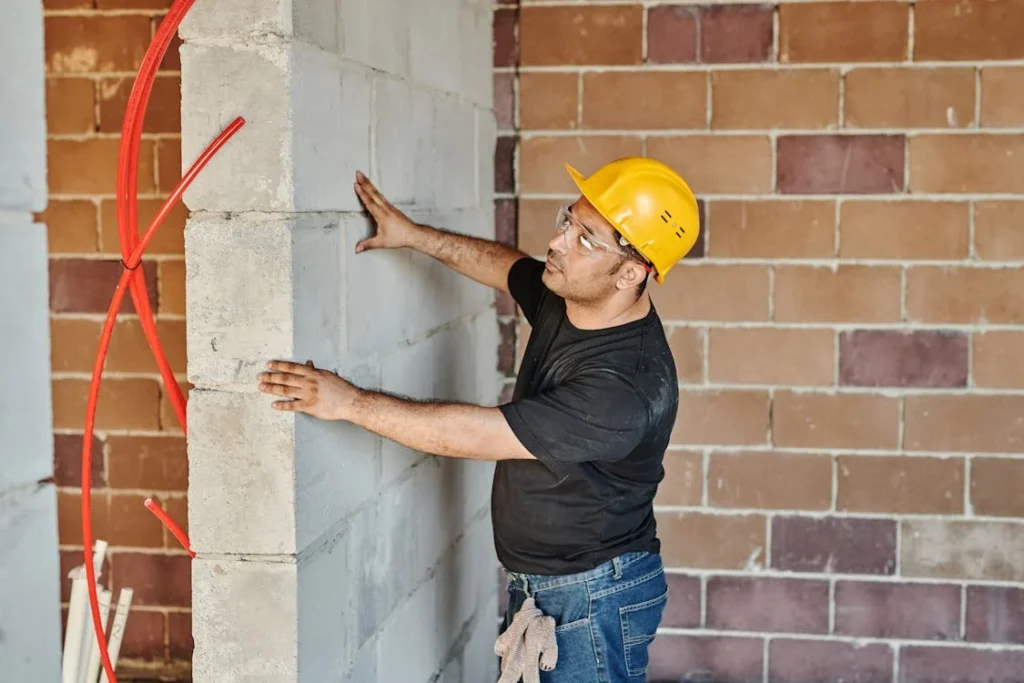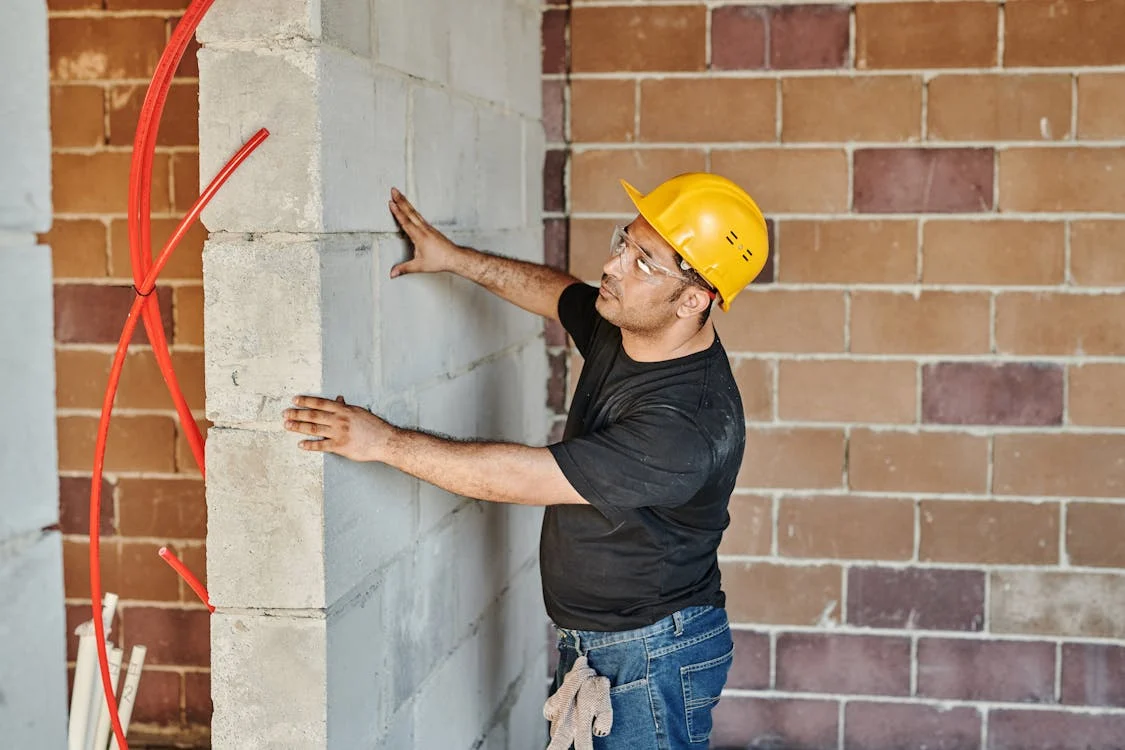Managing construction projects in Australia presents unique challenges and opportunities due to the country’s diverse geography, climate, and regulatory environment. From urban high-rises to rural infrastructure projects, successful construction management requires a comprehensive understanding of local conditions, adherence to stringent safety and quality standards, and effective project planning and execution. This blog will delve into best practices for managing construction projects in Australia, offering insights and practical advice for construction managers, contractors, and stakeholders.

Understanding the Australian Construction Landscape
1. Geographic and Climatic Considerations
Australia’s vast and varied landscape encompasses everything from tropical rainforests and arid deserts to temperate coastal regions. Construction managers must consider these geographic and climatic differences when planning and executing projects. Key factors include:
- Climate Adaptation: In northern Australia, where the climate is tropical, construction must account for heavy rainfall and high humidity, which can affect building materials and work schedules. In contrast, the arid interior regions face extreme heat, requiring measures to protect workers and materials.
- Site Accessibility: Remote and rural areas often present logistical challenges. Transporting materials and equipment to these sites requires careful planning and coordination, often involving multiple modes of transport.
2. Regulatory Environment
Australia has stringent building codes and regulations designed to ensure safety, sustainability, and quality. Key regulations include:
- National Construction Code (NCC): This comprehensive set of building standards covers everything from structural integrity and fire safety to energy efficiency and accessibility.
- Work Health and Safety (WHS) Regulations: These regulations emphasise the importance of maintaining safe work environments, with strict guidelines on hazard management, worker training, and incident reporting.
- Environmental Protection Laws: Construction projects must comply with environmental regulations to minimise impact on the natural environment, including guidelines for waste management, pollution control, and habitat preservation.
Best Practices for Managing Construction Projects in Australia
1. Effective Project Planning and Scheduling
Thorough planning is the cornerstone of any successful construction project. Effective project planning involves:
- Defining Clear Objectives: Establish clear project goals, timelines, and budgets. This provides a roadmap for the project and helps align all stakeholders with the project’s vision.
- Detailed Scheduling: Develop a detailed project schedule that outlines all tasks, milestones, and deadlines. Use project management software to track progress and identify potential delays early.
- Resource Allocation: Ensure that all necessary resources, including labour, materials, and equipment, are available when needed. This involves coordinating with suppliers and subcontractors to avoid bottlenecks.
2. Risk Management
Risk management is critical in construction due to the inherent uncertainties and complexities of the industry. Best practices include:
- Risk Identification and Assessment: Identify potential risks early in the project and assess their likelihood and impact. This includes risks related to safety, finances, schedule, and quality.
- Mitigation Strategies: Develop strategies to mitigate identified risks. This could involve implementing safety protocols, securing contingency funding, or adjusting project schedules.
- Regular Monitoring and Review: Continuously monitor risk factors throughout the project and adjust mitigation strategies as needed. Regular risk reviews help identify new risks and ensure that existing risks are being effectively managed.
3. Ensuring Compliance with Regulations
Compliance with Australian building codes and regulations is non-negotiable. Best practices for ensuring compliance include:
- Regular Training and Education: Ensure that all team members are familiar with relevant regulations and receive regular training on updates and best practices.
- Compliance Audits: Conduct regular compliance audits to identify and address any areas of non-compliance. This proactive approach helps avoid costly fines and project delays.
- Engaging Specialists: Consider engaging specialists, such as environmental consultants or safety officers, to provide expert advice and ensure compliance with specific regulations.
4. Embracing Technology
Advancements in technology offer significant benefits for construction project management. Key technologies include:
- Building Information Modeling (BIM): BIM provides a digital representation of the physical and functional characteristics of a project. It facilitates collaboration, improves accuracy, and helps identify potential issues before construction begins.
- Drones and Aerial Imaging: Camera Drones offer a cost-effective way to conduct site surveys, monitor progress, and inspect hard-to-reach areas. Aerial imaging provides detailed data for planning and decision-making.
- Project Management Software: Tools like Procore, Autodesk Construction Cloud, and Microsoft Project help manage schedules, resources, and communication. They provide real-time updates and improve transparency across the project team.
5. Sustainable Building Practices
Sustainability is increasingly important in the construction industry. Best practices for sustainable building include:
- Eco-Friendly Materials: Use sustainable and locally sourced materials to reduce the environmental impact of construction. This includes materials with low embodied energy and those that are recyclable or biodegradable.
- Energy Efficiency: Incorporate energy-efficient designs and technologies, such as solar panels, energy-efficient HVAC systems, and high-performance insulation. This reduces the building’s operational energy consumption and costs.
- Waste Management: Implement waste reduction and recycling programs to minimise construction waste. Proper waste management not only benefits the environment but also reduces disposal costs.
6. Strong Communication and Collaboration
Effective communication and collaboration are vital for the success of any construction project. Best practices include:
- Clear Communication Channels: Establish clear communication channels and protocols for all stakeholders. This ensures that everyone is informed and aligned throughout the project.
- Regular Meetings and Updates: Hold regular meetings to discuss progress, address issues, and plan next steps. Provide timely updates to all stakeholders to maintain transparency.
- Collaboration Tools: Use collaboration tools, such as Slack, Microsoft Teams, or Trello, to facilitate communication and coordination among team members, especially for large or distributed teams.
7. Quality Control and Assurance
Maintaining high-quality standards is essential for the success and longevity of construction projects. Best practices for quality control include:
- Quality Management Plan: Develop a comprehensive quality management plan that outlines quality standards, procedures, and responsibilities. This plan should cover all aspects of the project, from design to construction and final inspection.
- Regular Inspections and Testing: Conduct regular inspections and testing throughout the construction process to ensure compliance with quality standards. Address any issues promptly to avoid compromising the project’s integrity.
- Continuous Improvement: Implement a continuous improvement process that encourages feedback and lessons learned. Use this feedback to refine processes and improve future projects.
8. Safety Management
Safety is a top priority in the construction industry. Best practices for safety management include:
- Safety Training and Education: Provide regular safety training for all workers, covering topics such as hazard identification, emergency procedures, and proper use of equipment.
- Safety Protocols and Procedures: Develop and enforce strict safety protocols and procedures. This includes conducting regular safety audits and drills to ensure preparedness.
- Safety Equipment and PPE: Ensure that all workers have access to appropriate safety equipment and personal protective equipment (PPE). Regularly inspect and maintain safety equipment to ensure its effectiveness.

9. Effective Resource Management
Efficient management of resources, including labour, materials, and equipment, is crucial for project success. Best practices include:
- Labor Management: Hire skilled and experienced workers and provide ongoing training to enhance their skills. Optimise labour allocation to ensure that the right people are available for the right tasks at the right time.
- Material Management: Implement a robust material management system to track inventory, reduce waste, and ensure timely delivery of materials. This helps avoid delays and keeps costs under control.
- Equipment Management: Regularly maintain and inspect equipment to ensure it is in good working condition. Schedule equipment use to maximise efficiency and minimise downtime.
10. Financial Management
Effective financial management is essential to keep construction projects on budget. Best practices include:
- Budget Planning and Tracking: Develop a detailed project budget and track expenses closely. Use financial management software to monitor spending and identify potential cost overruns early.
- Cost Control Measures: Implement cost control measures, such as value engineering and cost-benefit analysis, to optimise spending without compromising quality.
- Contingency Planning: Allocate contingency funds to cover unexpected costs. This helps mitigate financial risks and ensures that the project can continue smoothly even if unforeseen expenses arise.
11. Engaging Stakeholders
Successful construction projects depend on the engagement and satisfaction of all stakeholders, including clients, contractors, and the community. Best practices include:
- Stakeholder Analysis: Conduct a thorough stakeholder analysis to identify all relevant parties and understand their needs and expectations.
- Regular Communication: Maintain regular communication with stakeholders to keep them informed and address any concerns promptly. This fosters trust and collaboration.
- Community Engagement: Engage with the local community to address any potential impacts of the project. This can include public consultations, informational meetings, and community benefit initiatives.
12. Legal and Contractual Considerations
Legal and contractual issues can significantly impact construction projects. Best practices include:
- Clear Contracts: Develop clear and comprehensive contracts that outline the roles, responsibilities, and expectations of all parties. Include provisions for dispute resolution and change management.
- Legal Compliance: Ensure compliance with all relevant laws and regulations, including zoning laws, labour laws, and environmental regulations. Engage legal counsel to navigate complex legal issues.
- Dispute Resolution: Establish a dispute resolution process to handle any conflicts that arise during the project. This helps prevent disputes from escalating and ensures that the project stays on track.
Managing construction projects in Australia requires a multifaceted approach that considers the unique challenges and opportunities of the local environment. By following best practices in project planning, risk management, regulatory compliance, technology adoption, sustainability, communication, quality control, safety, resource management, financial management, stakeholder engagement, and legal considerations, construction managers can ensure the successful completion of their projects.
Adopting these best practices not only enhances the efficiency and effectiveness of construction projects but also contributes to the long-term sustainability and resilience of the built environment in Australia. As the construction industry continues to evolve, staying abreast of emerging trends and technologies will be key to maintaining competitive advantage and delivering high-quality, impactful projects.
Our platform equips you with the tools to master the complexities of Australia’s diverse building environment, from urban centres to remote locations. Join us at Wunderbuild to streamline your project management, ensuring compliance, enhancing safety, and driving success in every build. Embrace the evolution of construction with Wunderbuild here, your partner in building a better tomorrow.




